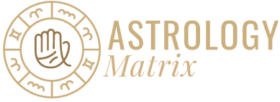
Humans have always been fascinated by the prospect of peering into the future, seeking answers to life’s enigmas through various mystical arts. Two ancient divination practices that have stood the test of time are palmistry and face reading. In this Article, we will explore the distinctive features of palmistry and face reading, shedding light on the unique ways each art unlocks the secrets held within.
Astrology Matrix helps clarify the differences between these two prominent methods, offering insights into how they provide reassurance amid life’s mysteries.
Palmistry: Mapping Destiny on the Palms
Palmistry, or chiromancy, is the intricate art of deciphering the lines, mounts, and shapes of the hands to gain profound insights into a person’s character, temperament, and potential future. Practitioners of palmistry posit that the hands function as a roadmap of an individual’s life journey, with each line and mount carrying specific meanings.
Palmistry, believed to have originated in India, involves analyzing a person’s palm and the lines on it to unveil insights into their future. Typically, the right palm is used for line readings, with some practitioners preferring the right hand for females and the left hand for males. Key lines on the hand include
The Life line: Beginning between the thumb and index finger and encircling the base of the thumb, it reveals information about a person’s health and life span.
The Head line: Slanting horizontally above the Life line, it provides insights into the individual’s personality and emotional nature.
The Heart line: Slanting towards the middle and index finger, it offers information about marriage and romance prospects.
The Destiny line: Centered in the palm and stretching up to the middle finger, it indicates the challenges a person may face in life.
Palmists also consider factors such as hand shape, mounts on the palms, and hand and finger size to discern the character and nature of an individual. While the lines on one’s palm may change with age, they remain unique, offering guidance in navigating life, making decisions about marriage and love, and understanding one’s strengths and weaknesses.
Face reading, also known as physiognomy or facial analysis, is an ancient practice that involves interpreting facial features to gain insights into a person’s character, personality, and even destiny. This art has roots in various cultures and has been employed for centuries in different parts of the world.
Key aspects of face reading include:
Forehead: The forehead is believed to represent intellect and thinking style. A prominent and smooth forehead may indicate intelligence and a logical mind set.
Eyes: The eyes are considered windows to the soul. Various factors, such as size, shape, and distance between the eyes, are analyzed to glean information about a person’s emotional nature, sincerity, and overall demeanor.
Nose: The nose is thought to reveal information about a person’s financial acumen, leadership abilities, and even health. Different shapes and sizes may be associated with certain traits.
Mouth and Lips: The size, shape, and expressions of the mouth and lips are thought to offer insights into communication style, sociability, and emotional tendencies.
Cheeks: The cheeks may provide information about a person’s energy, determination, and assertiveness. Rosy or pale cheeks might be interpreted in different ways.
Chin: The chin is often associated with willpower, determination, and decisiveness. A well-defined chin might be seen as a sign of strength.
Ears: Ears are believed to provide clues about a person’s character and behavior. The size, shape, and positioning of the ears may be considered.
Eyebrows: Shape, thickness, and position can indicate assertiveness, emotions, and social tendencies. Arched eyebrows may suggest expressiveness.
Lines and Wrinkles: Laugh lines, forehead lines, and crow’s feet may reveal experiences and emotions in face reading traditions.
Complexion: Skin color and quality are considered, with a healthy complexion linked to vitality and well-being.
Face Shape: Different shapes (round, oval, square) are associated with specific personality traits, like diplomacy for an oval face.
Moles and Birthmarks: Their placement and characteristics are believed to signify specific influences on a person’s life.
Hair: Though not strictly facial, hair style and condition are sometimes considered as an extension of one’s energy and personality.
Symmetry: Face readers look at the symmetry of features, associating it with beauty and linking it to harmony and balance in one’s life.
Differences Between Palmistry and Face Reading:
Physical vs. Emotional Focus:
Palmistry predominantly focuses on the physical aspects of a person’s life, such as career, health, and vitality.
Face reading places a greater emphasis on emotional and psychological aspects, aiming to uncover an individual’s inner nature and emotional tendencies.
Static vs. Dynamic Analysis:
Palmistry relies on the examination of static lines and mounts on the hands.
Face reading involves dynamic analysis, observing changes in expressions and features to gain real-time insights into a person’s current state.
Cultural Variances:
Different cultures may interpret facial features and palmistry symbols differently. Face reading may be influenced by cultural perceptions of beauty and character.
Conclusion
In conclusion, palmistry and face reading offer distinct perspectives on understanding individuals, with palmistry focusing on physical aspects and face reading revealing emotional and psychological dimensions. Both ancient arts serve as captivating tools for self-discovery, providing glimpses into the mysteries within us.
Explore the profound insights of the Best Palm Readers available at Astrology Matrix.
Contact us to gain a comprehensive understanding of the intricacies shaping your life’s destiny.



